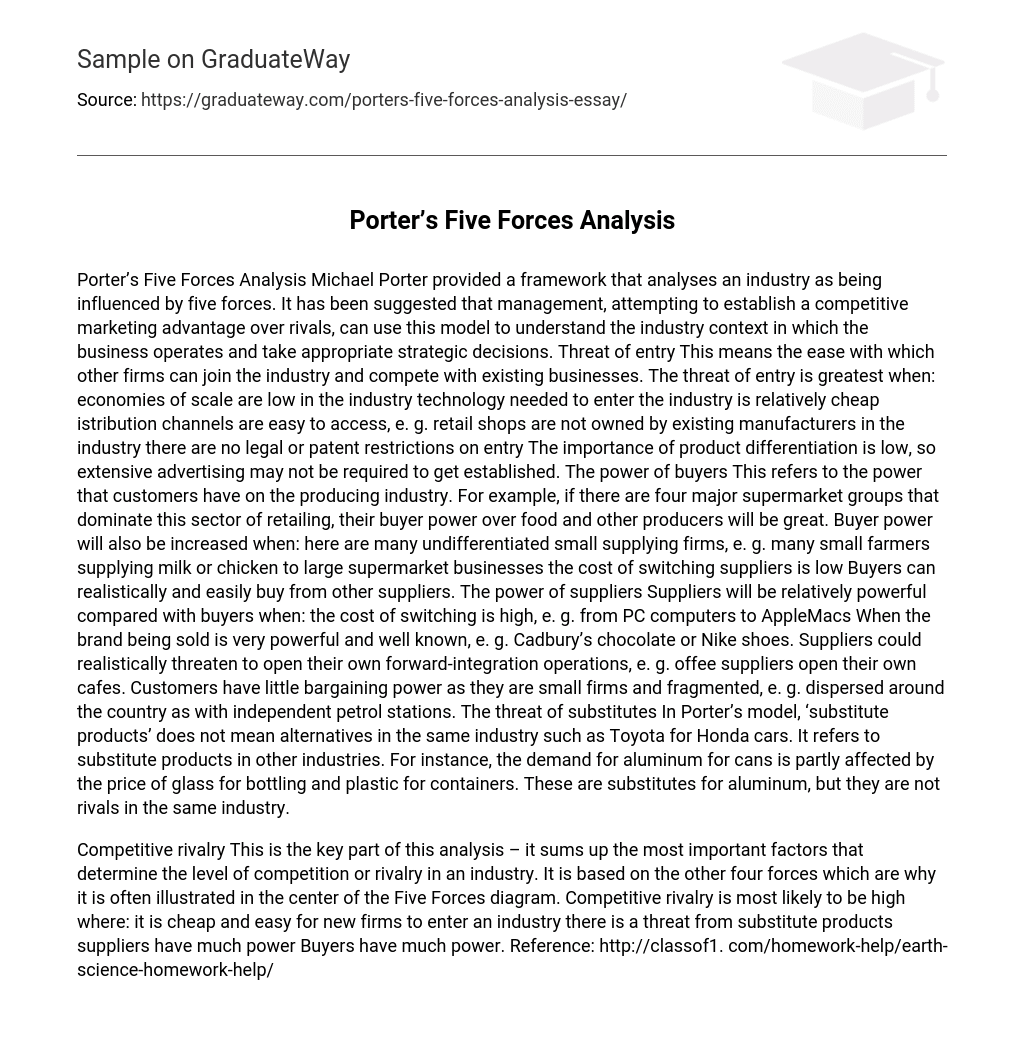Porter’s Five Forces Analysis Michael Porter provided a framework that analyses an industry as being influenced by five forces. It has been suggested that management, attempting to establish a competitive marketing advantage over rivals, can use this model to understand the industry context in which the business operates and take appropriate strategic decisions. Threat of entry This means the ease with which other firms can join the industry and compete with existing businesses. The threat of entry is greatest when: economies of scale are low in the industry technology needed to enter the industry is relatively cheap istribution channels are easy to access, e. g. retail shops are not owned by existing manufacturers in the industry there are no legal or patent restrictions on entry The importance of product differentiation is low, so extensive advertising may not be required to get established. The power of buyers This refers to the power that customers have on the producing industry. For example, if there are four major supermarket groups that dominate this sector of retailing, their buyer power over food and other producers will be great. Buyer power will also be increased when: here are many undifferentiated small supplying firms, e. g. many small farmers supplying milk or chicken to large supermarket businesses the cost of switching suppliers is low Buyers can realistically and easily buy from other suppliers. The power of suppliers Suppliers will be relatively powerful compared with buyers when: the cost of switching is high, e. g. from PC computers to AppleMacs When the brand being sold is very powerful and well known, e. g. Cadbury’s chocolate or Nike shoes. Suppliers could realistically threaten to open their own forward-integration operations, e. g. offee suppliers open their own cafes. Customers have little bargaining power as they are small firms and fragmented, e. g. dispersed around the country as with independent petrol stations. The threat of substitutes In Porter’s model, ‘substitute products’ does not mean alternatives in the same industry such as Toyota for Honda cars. It refers to substitute products in other industries. For instance, the demand for aluminum for cans is partly affected by the price of glass for bottling and plastic for containers. These are substitutes for aluminum, but they are not rivals in the same industry.
Competitive rivalry This is the key part of this analysis – it sums up the most important factors that determine the level of competition or rivalry in an industry. It is based on the other four forces which are why it is often illustrated in the center of the Five Forces diagram. Competitive rivalry is most likely to be high where: it is cheap and easy for new firms to enter an industry there is a threat from substitute products suppliers have much power Buyers have much power. Reference: http://classof1. com/homework-help/earth-science-homework-help/





